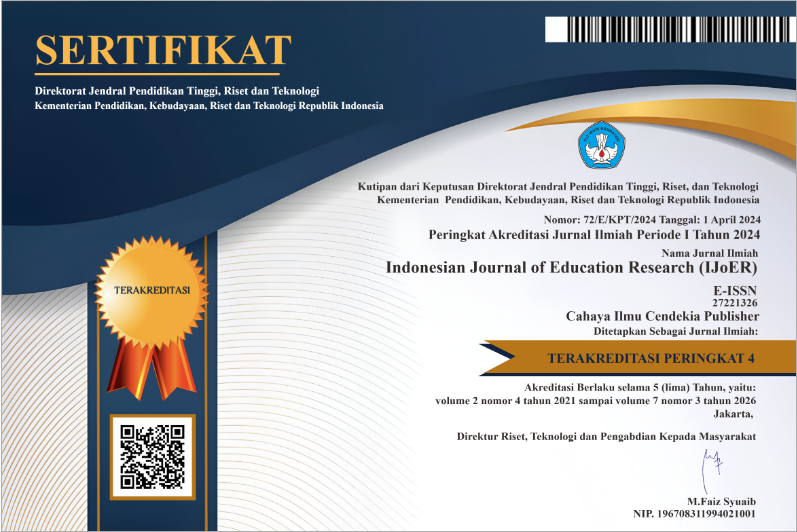Problems Encountered In Learning Speaking And The Solving Strategies By Eleventh Graders at SMA N 5 Tebo
Abstract
Purpose of the study: The purposes of this research were to investigate the problems encountered in learning speaking and to describe students’ strategies that to solve those problems.
Methodology: This research was a quantitative research with a survey approach through questionnaire. The sample of this research were 68 students of natural science class 1 and 2. The data of this research were obtained through 25 questions of the questionnaire.
Main Findings: The finding showed that: 1) The problems encountered by students were four aspects ( inhibition, nothing to say, low or uneven participation, and mother tongue). Nothing to say was the problem encountered by students. 2) Students mostly used all the strategies (cognitive, meta cognitive, social, and affective strategies) to help them. The cognitive strategies was the high percentage.
Novelty/Originality of this study: The novelty in this research is the strategy for student problem encountered in learning is carried out at Tebo
References
[2] Khadidja, K. (2010). The Effect of Classroom Interaction on Developing the Learner’s Speaking Skill.Algeria. Unpublish Thesis. Algeria: Mentouri University.
[3] Swan. (2005). Pronunciation Difficulties Analysis: A Case Study Using Native Language Linguistic Background to Understand a Chinese Learners Pronunciation Problems. [Online]Available:http://www.birmingham.ac.uk/Documents/collegeartslaw/cels/ essays/languageteaching/DailyLTMImplementingTaskBasedLanguageTeachingin Korean.pdf ( June 29, 2014).
[4] Tarigan, H. (1990). Prinsip-prinsip Dasar Metode Riset Pengajaran Dan PembelajaranBahasa.[Online]Available: http://eprints.ung.ac.id/5497/3/2013-1- 88203-321409176-bab2-01082013022155.ps ( July 12, 2014).
[5] Lado. (2009). Improving English Speaking Ability Through Classroom Discussion. [Online]Available:http://eprints.umk.ac.id/145/1/IMPROVING_ENGLISH_SPE AKING_ABILITY.pdf ( october 17, 2014).
[6] Richard, J. C. and Renandya, W. A. (2002). Methodology in Language Teaching. Cambrigde: Cambridge University Press.
[7] Cresswell, J.W (2003). Research Design Qualitative, Quantitative and Mix MethodsApproaches.[Online]Available:http://isites.harvard.edu/fs/docs/icb.topic1 334586.files/2003_Creswell_A%20Framework%20for%20Design.pdf (April 11, 2014).
[8] Cresswell, J.W (2008). Qualitative Inquiry and Research Design Choosing AmongFiveApproaches.[Online]Available: http://gregperreault.com/creswell-j-w2008-research-design-qualitative-quantitative-and-mixed-methodsapproach/(April 11, 2014).
[9] Creswell, J.W. (2012). Educational Research: planning, conducting and evaluating quantitative and qualitative research (Boston: Pearson Education, Inc).
Copyright (c) 2020 Titik Retno Ningsih

This work is licensed under a Creative Commons Attribution-NonCommercial 4.0 International License.
Authors who publish with this journal agree to the following terms:
- Authors retain copyright and acknowledge that the Indonesian Journal of Education Research (IJoER) is the first publisher licensed under a Creative Commons Attribution 4.0 International License.
- Authors are able to enter into separate, additional contractual arrangements for the non-exclusive distribution of the journal's published version of the work (e.g., post it to an institutional repository or publish it in a book), with an acknowledgment of its initial publication in this journal.
- Authors are permitted and encouraged to post their work online (e.g., in institutional repositories or on their website) prior to and during the submission process, as it can lead to productive exchanges and earlier and greater citation of published work.






.png)
.png)




















